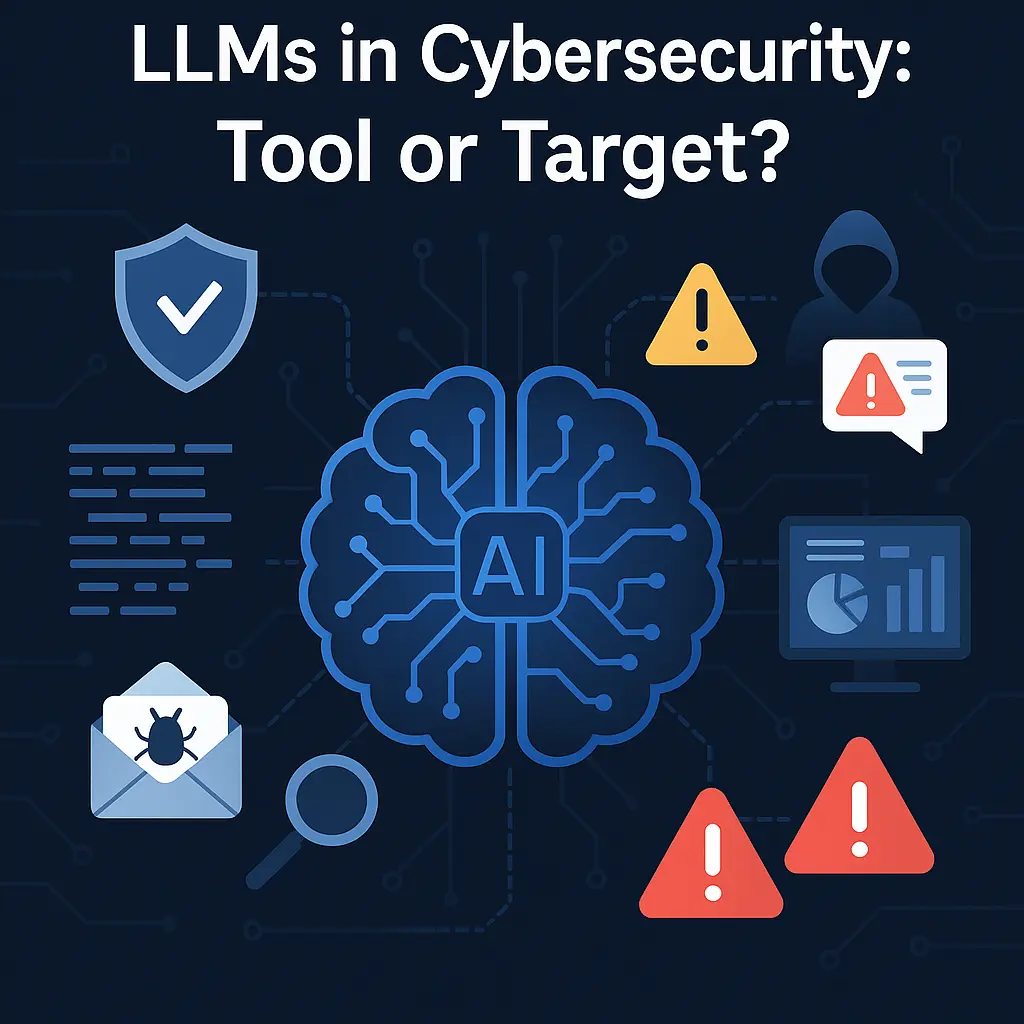LLMs in Cybersecurity

LLMs in Cybersecurity: Tool or Target?
Every aspect of the digital landscape—including cybersecurity—is being changed by Large Language Models (LLMs) such as GPT-4, Claude, and Gemini. These AI-powered models are not only altering how companies identify threats, process data, and automate solutions, but also generating totally new hazards. This dichotomy raises a basic issue: Are LLMs a cybersecurity tool or an evolving target?
The response is: both.
LLMs as a Cybersecurity Instrument
- Analysis and Detection of Threats
LLMs are great at reading and understanding large volumes of unstructured data. LLMs give security teams the ability to:
- Examine warnings and log anomalies
- Summarize threat intelligence reports
- Cross-reference indications of compromise (IOCs) across several databases
LLMs help analysts to act more quickly, hence lowering the mean time to identify and react (MTTD/MTTR).
- Incident Response Automation
Security operations centers (SOCs) are using LLMs to:
- Draft response playbooks
- Create scripts or remedial orders
- Based on past context, triage warnings and set priorities
This not only serves to simplify low-level activities with great accuracy but also lessens analyst weariness.
- Training and Security Awareness
LLMs are being used to:
- Generate phishing simulations targeted to employee roles
- Answer security policy queries via internal chatbots
- Simulate red team/blue team exercises
They provide scalable, flexible, on-demand interactive security education.
- Scanning for Vulnerabilities and Code Review
LLMs are used by some companies to:
- Examine infrastructure-as-code (IaC) for misconfigurations
- Find insecure code snippets in CI/CD pipelines
- Propose near real-time remedies
This “shift-left” strategy introduces security into the early phases of development.
LLMs as a Cybersecurity Target
- Attacks by Prompt Injection
Prompt injection is the next front for abusing LLMs, much as SQL injection troubled early web applications. Attackers can:
- Insert harmful instructions to alter LLM results
- Bypass safety filters or cause the model to function undesirably
- Leak sensitive context from past conversations (in chat history)
- Data Leakage and Inference
Attackers might try, if LLMs are exposed to private cues or trained on sensitive data:
- Reconstructing training data using model inversion
- Membership inference to determine whether a particular record was in the training set
- Extracting internal corporate data using smartly crafted prompts
- Social Engineering Driven by Artificial Intelligence
LLMs are being used by threat actors to:
- Produce hyper-personalized phishing emails
- Develop deepfake scripts and pretexting material
- Automate social engineering efforts with convincing dialogue
Malicious content’s quality and credibility are higher than ever.
- Public API Abuse
Exposed through public interfaces, LLMs could be:
- Misused for producing harmful code
- Involved in regulatory infractions (e.g., hate speech, false information)
- Exploited through DoS-style prompt flooding or API limit abuse
Defending by Design: Dual Role Management
Organizations have to handle LLMs as both assets and liabilities since they are becoming essential to security operations. Among the best practices are:
- Quick validation & sanitization to stop injection attacks
- Rate restriction and access control on LLM endpoints
- Anomaly identification through logging and monitoring of all interactions
- Regular red teaming of AI systems for hostile testing
- LLM deployment with guardrails and safety layers
Furthermore, much as they did with conventional software stacks, compliance systems might soon start to require particular LLM security controls.
Last Ideas
With unmatched automation, knowledge, and efficiency, LLMs are set to transform cybersecurity. This power, however, carries natural dangers that call for proactive defense. Security executives have to understand that LLMs are also targets, not only tools.
AI security will, in the next years, be synonymous with cybersecurity. Companies that include LLMs ethically, securely, and responsibly will not only reduce risks but also have a competitive advantage.
